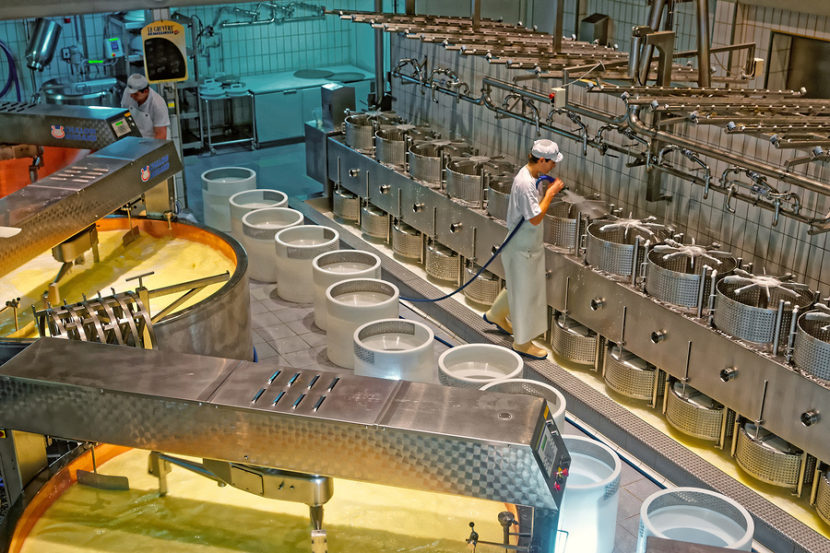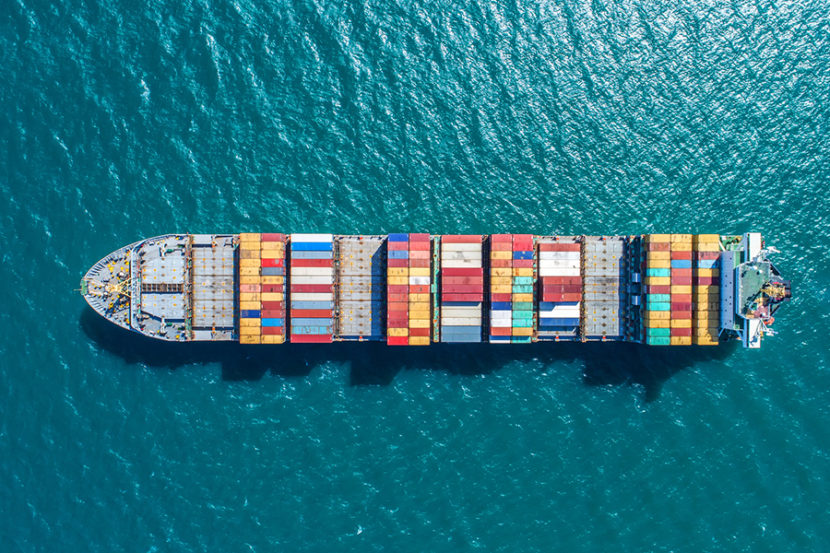CIP and COP Fundamental to Food Safety
By Jaan Koel
A key part of safe food manufacturing is cleanliness, which is why solid cleaning-in-place (CIP) and cleaning-out-of-place (COP) systems are essential.
The difference between the two is basically inside, outside. CIP is a process that uses water rinses, hot caustic and/or acid recirculation, precise temperatures, and turbulence to clean soils and bacteria from the inside surfaces of food production equipment—such as pipes, mixing tanks, pumps, valves, storage vessels, and other equipment.
It basically involves connecting the production line to a stand-alone flushing system and pushing a button; no dismantling of equipment is needed. Further, it’s all computer controlled.
A COP system, on the other hand, consists of one or more rectangular tanks that use pumps, high pressure nozzles, caustics, acids, hot water, and plain old elbow grease to clean the outside surfaces of external parts, such as hoses, clamps, fittings, filling nozzles, trays, knives, conveyor belts, and other components that CIP can’t handle. Parts have to be removed and disassembled, cleaned, then put back, just like washing dishes in a sink or dishwasher.
Repeatability
CIP savings come from using less time, energy, water, and chemicals.
“CIP systems are automated and because of the way they’re designed provide a high degree of repeatability,” says John Maconachie, president of Ontrack Project Solutions in Barrie, ON.
“Critical parameters include matching the right vessel to the CIP system at the right time; choosing the right cleaning chemicals for the product; matching the correct pump size to pipe diameter for the right turbulence; making sure that inside surfaces and welds are smooth so bacteria or soils can’t hide, and conducting ongoing electronic monitoring and record keeping for easy auditing and compliance with FSMA, CFIA, GFSI, and other standards.”
COP is just as important. But because COP methods are highly manual, they are not as repeatable and can sometimes be subject to human error, although failures are rare.
Rotating Spray Balls
Bryan Downer, VP of Sales at CSI, a CIP system builder in Springfield, MO, says his company always specifies rotating, as opposed to static spray balls, for cleaning tanks and storage vessels. The rotating type is considerably faster and able to remove soils and bacteria more effectively than static spray balls. Further, they’re only marginally more expensive—around $400 compared to $80—a difference that’s insignificant compared to the many tens of thousands of dollars a tank costs. In some cases, operational savings can be huge.
“An example is a client who was using static spray balls that took 2.5 hours per cycle to clean a tank,” Downer notes. “He wanted to increase his business and was about to invest millions into expanding his plant. CSI recommended rotating spray balls that reduced cleaning time to 45 minutes instead.” The client got his increased output through less downtime and ability to run more hours per day, while avoiding an expensive plant expansion.
Recovering Costs
CIP savings come from using less time, energy, water, and chemicals. These can be achieved by re-using the caustic and acid, recirculating during the last sanitizing step and recovering the last fresh water rinse to be used for the next wash’s first rinse. “Another method is to employ advanced monitoring technology that uses sensors and software in real time to accurately understand what is exactly happening,” says Maconachie. “A dairy customer of ours in Ottawa has been using a monitoring system called ‘eView’ and ended up saving 70,000 litres of water and two hours of CIP time per day.”
Meanwhile, Chad Dykstra at Madison, WI-based Sani-Matic also underlines the importance of advanced measurement tools to ensure proper CIP performance and food safety. “You want to have a control system that is specifically designed from the ground up to provide reliable data, repeatable results, and one that can predict potential failures. CIP control systems that can warn you of a potential failure, determine the parts you need, find and order the parts, then give you the proper instructions for replacing them are already available. They just need to become more widely used.”
About the Author
Jaan Koel is a respected food safety writer with a substantial portfolio developed over many years of front line writing experience. He began contributing to GFSR six years ago and is a regular contributor to other industry leading business-to-business publications. Aside from his expertise in the area of article writing, he has developed a strong credibility writing in the areas of corporate communications, public relations, government communications and marketing.

-
 FeaturedRisk management
The Cost of a Breach: What a Cyberattack Could Mean for Food Safety Recalls
FeaturedRisk management
The Cost of a Breach: What a Cyberattack Could Mean for Food Safety Recalls
-
 FeaturedRisk management
Securing the Food Chain: How ISO/IEC 27001 Strengthens Cybersecurity
FeaturedRisk management
Securing the Food Chain: How ISO/IEC 27001 Strengthens Cybersecurity
-
 FeaturedRisk management
Revolutionizing Food Safety Training: Breaking Out of the “Check-the-Box” Mentality
FeaturedRisk management
Revolutionizing Food Safety Training: Breaking Out of the “Check-the-Box” Mentality
-
 GFSI Standards
GFSI 2025: Building Trust, Tech-Forward Solutions, and Global Unity in Food Safety
GFSI Standards
GFSI 2025: Building Trust, Tech-Forward Solutions, and Global Unity in Food Safety
-
 FeaturedFood Safety
Integrated Pest Management: Strategies to Protect Your Brand’s Reputation
FeaturedFood Safety
Integrated Pest Management: Strategies to Protect Your Brand’s Reputation
-
 FeaturedFood Safety Culture & Training
No Open Door Policy: Challenges That Impact Pest Control in Food Processing Plants
FeaturedFood Safety Culture & Training
No Open Door Policy: Challenges That Impact Pest Control in Food Processing Plants




